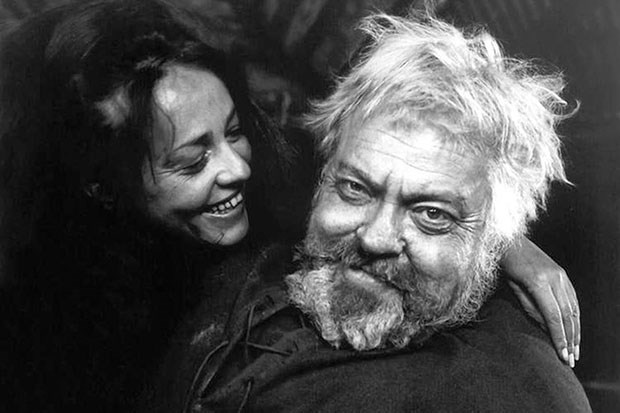Pacific Cinémathèque pays tribute to the Bard on film with Shakespeare 400, June 10-30 and July 1-13. For schedule visit thecinematheque.ca/shakespeare-400.
In 1964 Spanish producer Emiliano Piedra suggested to Orson Welles that he would finance Chimes at Midnight if the filmmaker also shot a new version of Robert Louis Stevenson’s Treasure Island as a second project. Welles agreed to the proposal even though he had no intention of following through. That’s the way some movies got made.
A newly-restored version of Welles’ Chimes at Midnight is screening tonight at Pacific Cinémathèque as the opening film in the retrospective series, Shakespeare 400, marking the 400th anniversary of the Bard’s death.
Including features, shorts and television programs, Shakespeare is credited as the writer on more than 1,100 productions in the IMDB database. The Cinémathèque has chosen 13 films from this vast catalogue for their retrospective including two adaptations by Japanese filmmaker Akira Kurosawa (Throne of Blood and Ran), two directorial efforts from Laurence Olivier (Hamlet and Henry V), the 1958 sci-fi classic Forbidden Planet and the Broadway musical West Side Story. Roman Polanski’s 1971 version of Macbeth, made for Hugh Hefner’s Playboy film unit, shares the bill tonight with Chimes at Midnight.
Welles was the consummate con man and showman according to former North Shore News columnist Robert Aiken who wrote about his experiences working with the Hollywood iconoclast in a series of articles for NSN in February, 1999. Aiken’s “Citizen Welles” reminiscences were used as major source material for Josh Karp’s book Orson Welles’s Last Movie: The Making of The Other Side of the Wind, published last year by St. Martin’s Press.
Aiken was hired on The Other Side of the Wind in 1970 through his friend Gary Graver and got a chance to watch the director at work first-hand. Even though the production was shot in L.A. Welles was working outside of the Hollywood process by then, operating in the shadows of the studio system.
Chimes at Midnight, a Spanish/Swiss co-production, was initially panned by film critics when it came out but is now considered one of Welles’ greatest masterpieces, made as an independent film in his post-Hollywood period.
The script, centred around the Shakespearean character Falstaff, uses material from five plays. Welles plays Falstaff himself and enlisted an international cast of actors to work with him on the project including Jeanne Moreau, Fernando Rey, Marina Vlady, Margaret Rutherford and John Gielgud. Several of the actors were only available for brief periods of time and halfway through production Welles ran out of money. The film was shot in Spain at various locations between Sept.1964 and April 1965 with a break between December and February while Welles looked for more financing to complete the $800,000 budget.
Money was always uppermost in Welles’ thoughts. Aiken’s NSN article sheds some light on how this played out with the filmmaker: “In July, Gary had read in a Hollywood trade paper that Orson Welles was in town for a few days. He hurriedly called the Beverly Hills Hotel, boldly asked to speak with Mr. Welles, got through to him and proceeded to bemoan his lot as a maker of X-rated films and offered to work with the filmmaker anywhere. ‘I’ll pay my own way. Anything for a chance to work with you.' Silence. A bit of incoherent grumbling was heard, then: ‘I’ll work for nothing.’ A shorter silence then: ‘Can you be over here in 10 minutes?’”
Chimes of Midnight screens tonight at 6:30 p.m. and several more times over the weekend.



